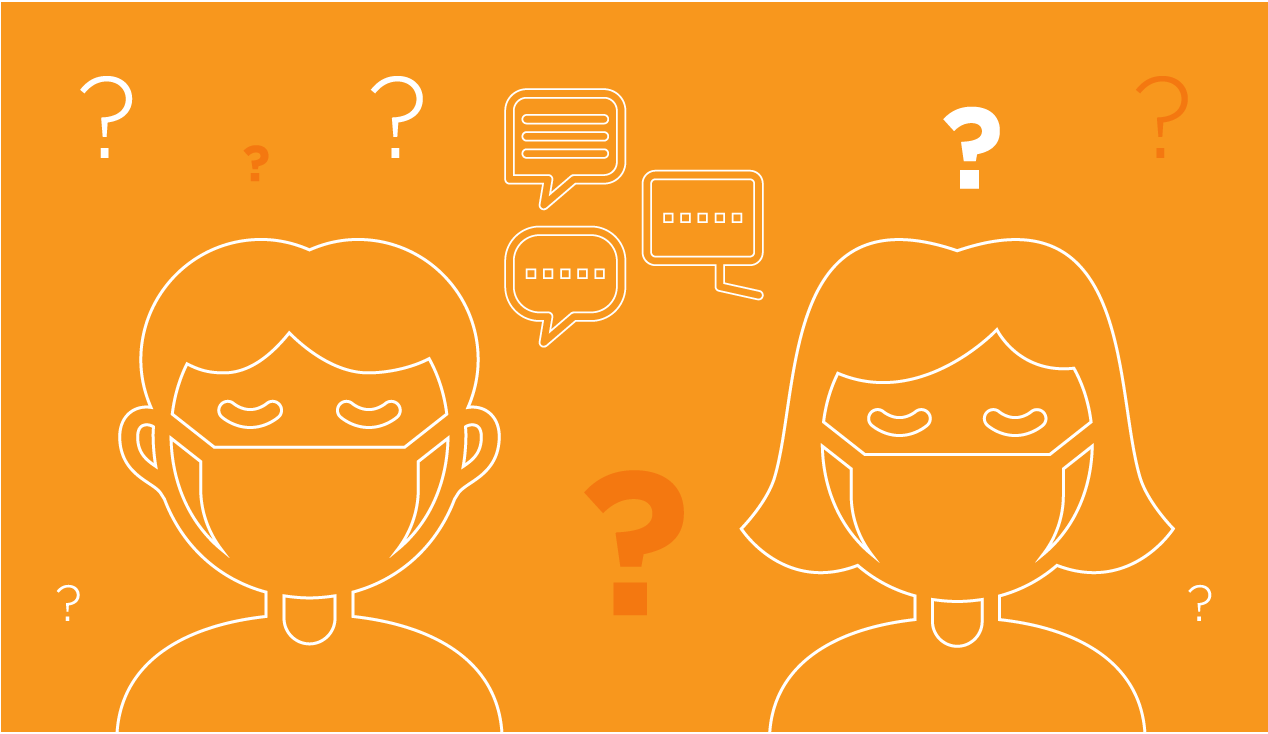
Date:
Face masks are an important part of public health strategies to keep COVID-19 in check. A mask helps to protect you from getting infected. It helps to keep you from infecting others. By masking up together, we slow the spread of the virus in our communities.
With everyone now required to wear masks in public spaces here in Pennsylvania, we’ve been hearing questions about mask usage, safety, and effectiveness. The answers aren’t always as easy as putting a mask on, but here’s our guidance based on current evidence.
Do I need to wear a mask indoors?
Not if you’re in your own home with those you live with. In any other indoor situation, yes! Masks are a barrier for respiratory droplets—small particles of saliva and mucus that we spray when we talk, breathe, cough, or sneeze. You’re more likely to be close to others when you’re inside, and wearing masks protects us from each other’s droplet spray. Even if you’re not near someone, lower air circulation indoors means that small droplets can hang around in the air longer, so a mask is still protective.
The coronavirus is tiny. Does it even matter if I wear a mask if it’s not an N95?
Yes, all masks help! Let’s talk about particle size. A micron is a millionth of a meter; for reference, the width of a single human hair is generally anywhere between 17-180 microns. Using high-powered electron microscopy to take pictures of the virus, scientists have determined that the coronavirus is about 0.1 microns in diameter. In everyday settings, however, the virus doesn’t travel alone. COVID-19 viruses are usually carried in the respiratory droplets described above, which are generally at least 10 times larger than the virus. Surgical masks and many common DIY mask materials block these droplets effectively. Experimental studies, statistical analysis across countries, and individual case reports all provide evidence that widespread public use of non-N95 masks can slow the spread of disease. Check out these tips for optimizing the fit and fabric of your mask.
Do I need to wear a mask if I’m also distancing?
It depends. There are multiple factors that determine the infection risk of any given situation: indoors vs. outdoors, distance from others, how long you interact with someone, and the likelihood of droplet spray. You could be standing more than 6 feet from someone, but if you’re talking for a while and speaking loudly to be heard, wearing a mask would still be a good idea. On the other hand, if you’re outside and no one else is nearby, you don’t need a mask. Still, it’s a good idea to have a mask ready in case someone comes by; the simple action of wearing a mask helps everyone feel like we are taking care of each other.
Am I in danger of breathing in too much carbon dioxide from wearing a mask?
No. Let’s talk about size again. Remember how the coronavirus is about 0.1 microns wide? A molecule of carbon dioxide is about 0.00033 microns wide, and oxygen is about the same—almost a thousand times smaller. No molecule that small will get trapped in a mask. To help us picture the difference, let’s estimate that the period you see at the end of this sentence is about 1 millimeter wide. If we pretend that the period represents a molecule of oxygen or carbon dioxide, then the virus would be about the size of a meterstick!
Even though your body is getting the oxygen it needs, breathing through a mask can feel uncomfortable. Make sure that your mask is snug around your nose and under your chin, but not tight over your face. Experiment with different types of masks to find one that fits best. And, keep an extra mask handy so that you can change if it builds up moisture. The more you wear your mask, the more you’ll get used to it.
You only need to wear a mask if you feel sick, right?
Everyone should wear masks! In the early days of COVID-19, one aspect of the virus that we didn’t understand was that people can transmit the disease before they show any symptoms. With more evidence, we now know that any of us could be infected, even if we’re feeling fine. The virus is spreading through communities everywhere, so don’t leave home without a mask.
Can I wear a mask if I have a breathing condition?
Talk to your doctor to discuss your individual condition and concerns. According to the Asthma and Allergy Foundation of America, a mask should be fine for people with mild or well-controlled asthma, but that may not be the right option for everyone. For those who can’t wear masks, other distancing measures will help keep you safe.


